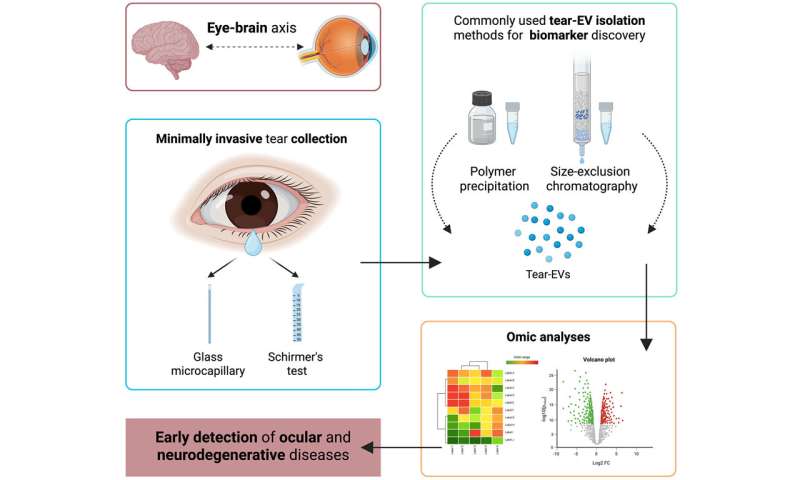For this reason, less invasive methods would be ideal. In this regard, tears are emerging as a promising alternative, although it is still necessary to determine whether this fluid can provide sufficient information. Several studies are seeking to answer this question by analyzing the potential of tiny particles released by cells, known as extracellular vesicles (EVs), as possible biomarkers.
The IVECAT group at IGTP is an expert in studying EVs and their potential role as biomarkers, that is, biological indicators for detecting or monitoring disease progression. Recently, in collaboration with the Ophthalmology Department of the Germans Trias i Pujol University Hospital, the team published a review in Extracellular Vesicles and Circulating Nucleic Acids summarizing more than one hundred studies on EVs and their use as a source of biomarkers in tears.

